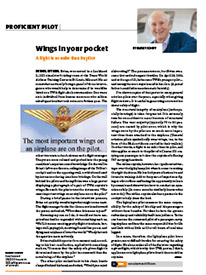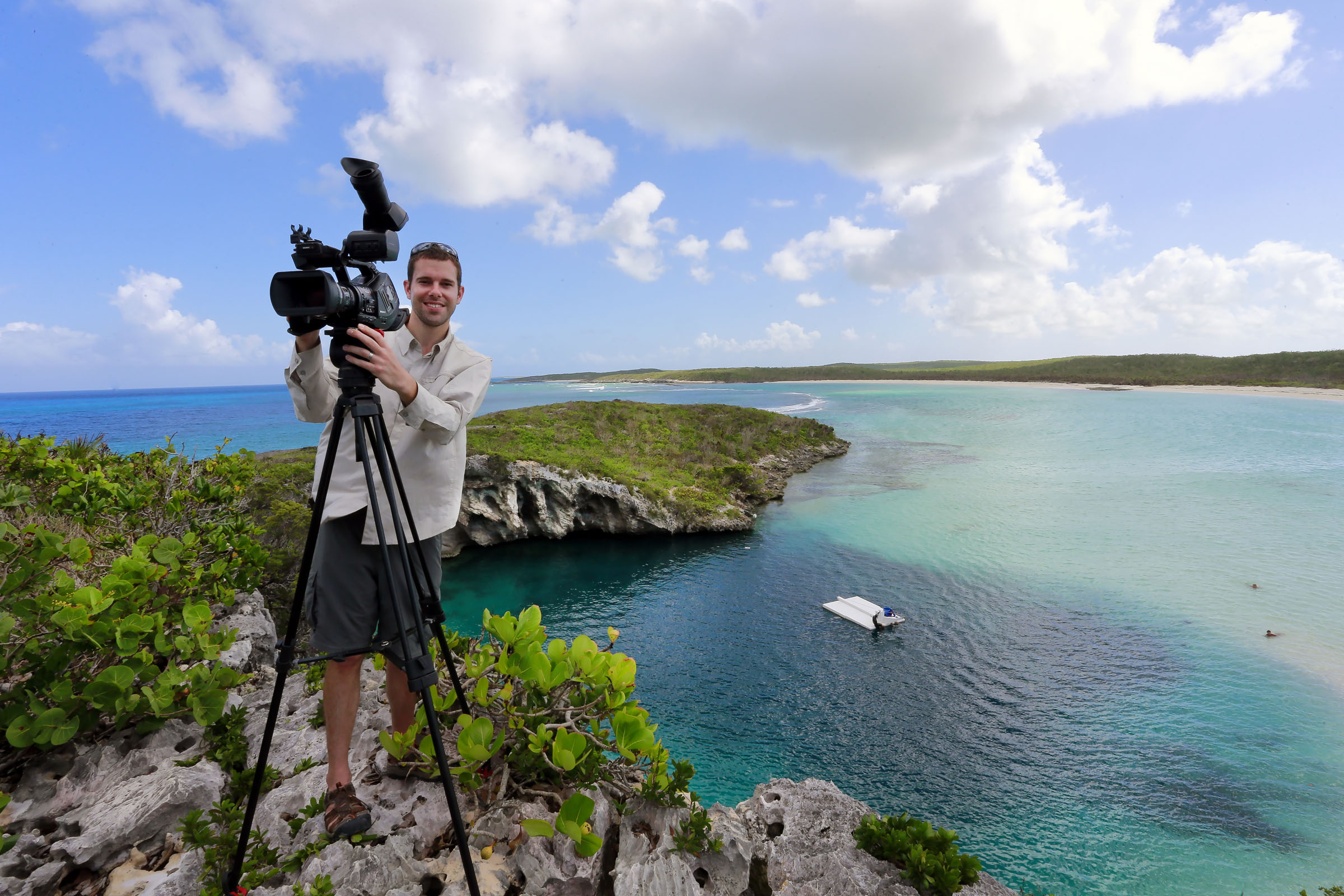An airport that appears in the desert for a massive counterculture festival before disappearing without a trace was just one of the destinations in AOPA Pilot’s Getaways issue that got pilots thinking about where to fly.
One of my favorite memories in a Cessna 310 is flying into Burning Man in 1997. Your article reminded me of many memories, and illustrated many of the differences since then.
When I flew in, the aviation burners didn’t actually have to properly pay (or at least we weren’t checked). There were no controllers, no real procedures documented, and nobody really covered their airplanes. The morning after we arrived, my buddy and I were watching a Cub on approach. I noticed he seemed a bit erratic in his glideslope, and at about 50 feet he swerved, pulled up hard, and stalled—just about augering into the playa in a cloud of dust. Several of us started running toward the airplane, but I saw a figure emerge from the wreckage and start a full-tilt run the other direction down the runway. I thought, Poor guy, he must be in shock, only to find later he was looking frantically for a place to bury his pot.
In some ways Dave Hirschman’s experience at NV88 seems almost oppressive compared to my experience, but the chaotic and vibrant scenes he describes are reminiscent of what I experienced, so it sounds like most of the character of Burning Man has been retained.
Some great memories stirred in me, and thanks for attending, writing, and bringing that to the AOPA members.
Dean Heistad
AOPA 1203989
Leesburg, Virginia
Pilots may have heard it’s “anything goes!” at the Burning Man event August 28 to September 5. But flying into Black Rock City Municipal Airport (88NV) has more rules than a Class C airport because of the high volume of traffic, multiple offset runways, four scenic patterns, skydiving operations, dust storms, crazy wind shifts, and adverse terrain. During peak times, 88NV is busier than Reno-Tahoe International Airport. Black Rock City Municipal Airport requires prior permission, preregistration, and an online test. You can find all the information online (airport.burningman.org).
Charles “Calamity” Petrie
88NV Airport Manager
Black Rock City, Nevada
Getaways
I wanted to let you know that I really enjoy the new direction that the magazine is going. I find it more informative than ever, and it is clearly the best aviation magazine in existence.
I like reading about destinations, many that I’ve been to and many that I have not. Stories on Alaska (been there, will go back), Triple Tree (not yet but will), northern Maine (I have flown all over Maine), First Flight (been there, of course), Burning Man (I’ll pass but enjoyed the article), on and on, all great stuff.
I also appreciate the work you do in improving ADS-B, improving the AD process, and support of medical reform and efforts to fight user fees.
The article on “178 Seconds to Live” was right on the mark, and might be the start of a process to meaningfully improve outcomes of inadvertent IMC.
Thanks for a great job.
Mike McNamara
AOPA 1129464
Pottstown, Pennsylvania
Control freak
Your comments about training being at the center in avoiding loss-of-control accidents are spot on. I appreciate AOPA’s continued role in helping GA pilots avoid accidents.
You should consider a push for the following things:
1. Elimination of the VMC demonstration in multiengine training. Institute a checkride standard that fails any pilot who allows the airspeed to drop below VXSE.
2. Change the private pilot stall training to require recovery initiated at the first indication of a stall at least half the time. Now, private pilots are trained to pull back on the yoke whenever stall is imminent, because a full stall and recovery are required for the checkride.
3. Require more realistic training in the transition from VMC to IMC for private pilots. This will require the use of simulation.
4. Require instrument pilots to have specific training in diagnosing instrument failures.
5. Require autopilot manufacturers to publish information about how the autopilot behaves when reference data becomes unreliable, and program simulators to replicate this behavior.
I don’t know how many instructors I have heard say, “There is no substitute for the real airplane.” That may be true, but there is also no substitute for adequate simulation. We can do better training than we are doing now, and reduce the loss-of-control accident rate.
Nick Frisch
AOPA 786318
Bremerton, Washington
Budget Buy: The fun machine
The article on the Piper J–3 Cub brought back a lot of good memories. I took my first flying lesson in a J–3 when I was 17 years old. I started in April 1945 and soloed July 3. The Cub was a 1939 model: Franklin engine, no electrics, no lights, no brakes.
My solo cross-country was to Meadville, Pennsylvania. I thought everything was going well until I got to where I thought the airport should be. I couldn’t find the airport. I flew around for a little while looking for the airport and the bent wire in the middle of the gas cap was getting pretty close to the caps.
I figured I had better find a place to land while the engine was running. I flew low over a field to look for rocks or ditches and then went around and landed. No problem—although I scared the milk out of a herd of cattle on the other side of the fence. The owner of the field took me to a small grass runway airport about five miles away that I had missed from the air. I picked up a can of gas there and got most of it in the tank. Then I grabbed that wooden prop, gave it a pull as hard as I could, and it started right up. I flew over to get my wallet and leave the can. Got directions to the correct airport and finally made that leg of my flight OK.
I still have my memories of the J–3 Cub. They were the Model A Ford of the airplane industry.
Gordon Straka
Rialto, California
I fly a J–3 Cub and 95 percent of my landings are curved. Astride the numbers, pull the power and watch my point the whole way down. Commercial pilots always laugh about my tight patterns. Simple and safe.
Scott Fasken
AOPA 1140519
Palisade, Colorado
 Every single time I read the monthly “Proficient Pilot” column in AOPA Pilot, I learn something new. Every time!
Every single time I read the monthly “Proficient Pilot” column in AOPA Pilot, I learn something new. Every time!
Austin Meyer
AOPA 944398
Columbia, South Carolina
Errata
In “Safety Pilot Landmark Accident: Nobody’s Flying Today” (April 2016 AOPA Pilot), we incorrectly cited the tachometer reading as evidence of the power output of a Mooney M20E. The manifold pressure was about 20 inches.
“Savvy Maintenance: LSAs: Who’s Guarding the Henhouse?” (April 2016 AOPA Pilot) incorrectly states that the Liberty XL2 uses a Rotax engine. The Liberty XL2 uses a Continental IOF-240 engine.
“Test Pilot” (April 2016 AOPA Pilot) incorrectly describes the B–45 as a Boeing aircraft. It was built by North American Aviation.
AOPA Pilot regrets the errors.
We welcome your comments. Editor, AOPA Pilot, 421 Aviation Way, Frederick, Maryland 21701 or email ([email protected]). Letters may be edited for length and style before publication.
How often do you file VFR flight plans?
Every VFR flight 5%
Frequently 10%
Sometimes 14%
Rarely 34%
Never 37%
Aviation eBrief poll
Hangar Talk
 AOPA videographer Josh Cochran’s first trip to the Bahamas, to shoot video with the folks at AirCam (“Magical Realism,” page 64), gave him an incredible view of the island nation’s crystal-blue waters and sandy beaches. Riding in the front seat of the AirCam, there’s almost nothing between you and the scenery below, he said. “It’s like you’re flying—not in an airplane,” he added. And traveling to the Bahamas in the float-equipped twin with a 75 mph cruise speed, gave Cochran plenty of time to admire the view. On the islands, Cochran was impressed by his fellow videographers’ exacting standards and attention to detail as they filmed stunning aerials of this tropical paradise. But getting just the right shot takes sacrifice, even in paradise: The mosquitos were so bad on the ramp that at one point Cochran and photographer Chris Rose jumped in the Cessna 182 for cover.
AOPA videographer Josh Cochran’s first trip to the Bahamas, to shoot video with the folks at AirCam (“Magical Realism,” page 64), gave him an incredible view of the island nation’s crystal-blue waters and sandy beaches. Riding in the front seat of the AirCam, there’s almost nothing between you and the scenery below, he said. “It’s like you’re flying—not in an airplane,” he added. And traveling to the Bahamas in the float-equipped twin with a 75 mph cruise speed, gave Cochran plenty of time to admire the view. On the islands, Cochran was impressed by his fellow videographers’ exacting standards and attention to detail as they filmed stunning aerials of this tropical paradise. But getting just the right shot takes sacrifice, even in paradise: The mosquitos were so bad on the ramp that at one point Cochran and photographer Chris Rose jumped in the Cessna 182 for cover.


